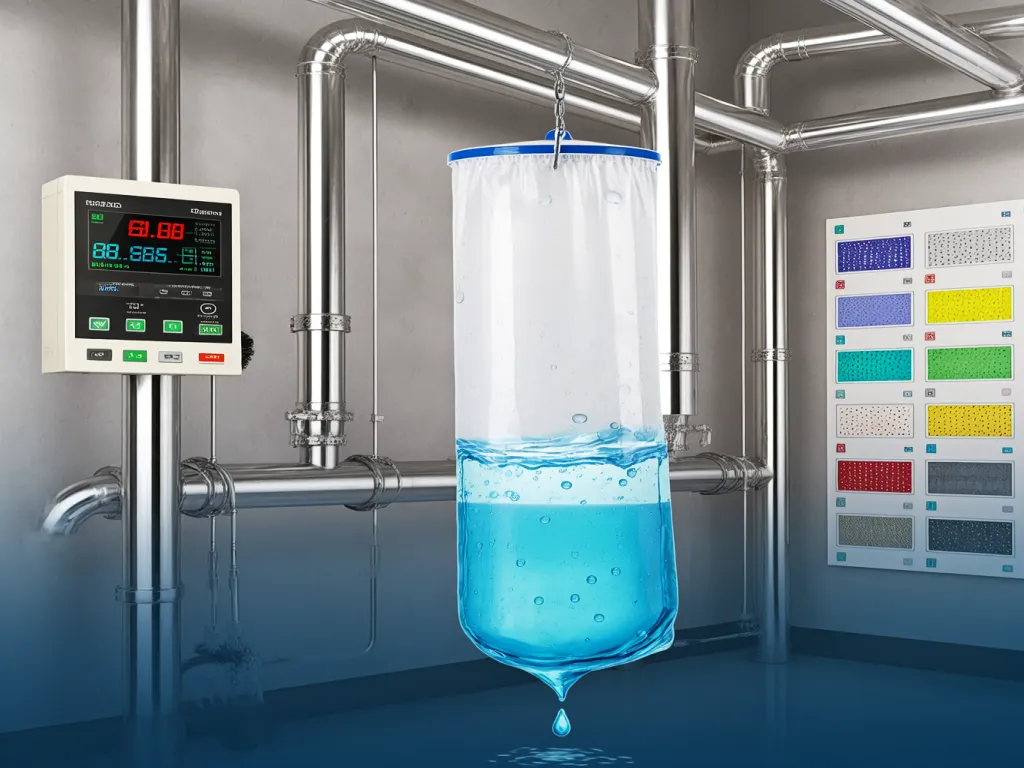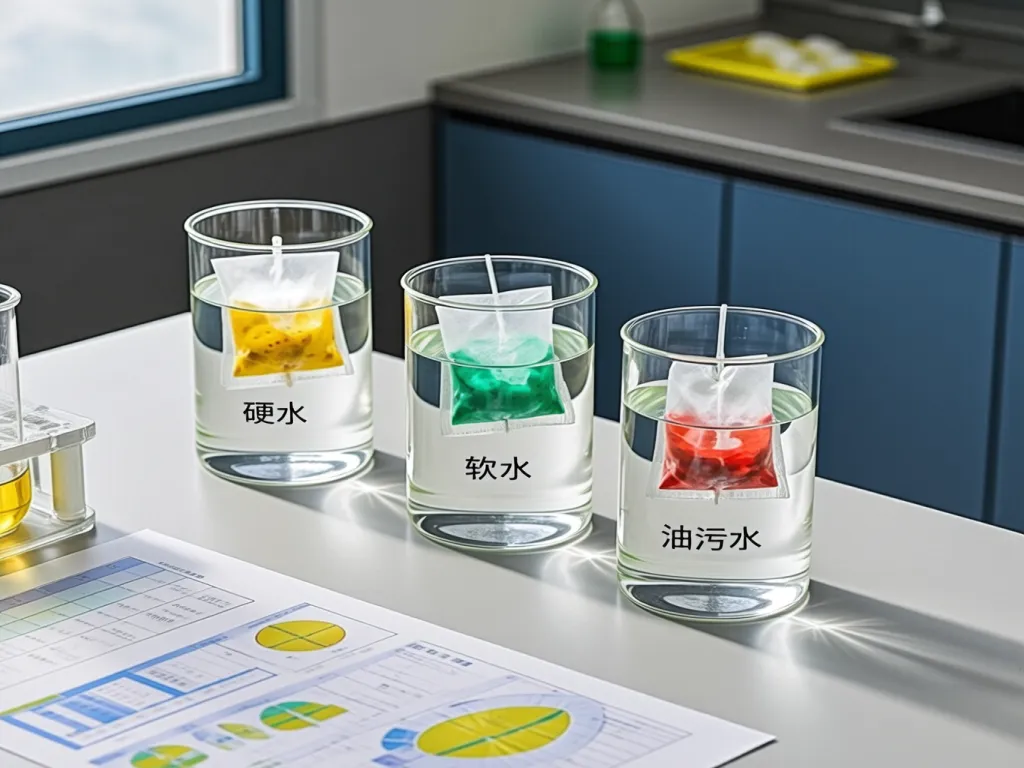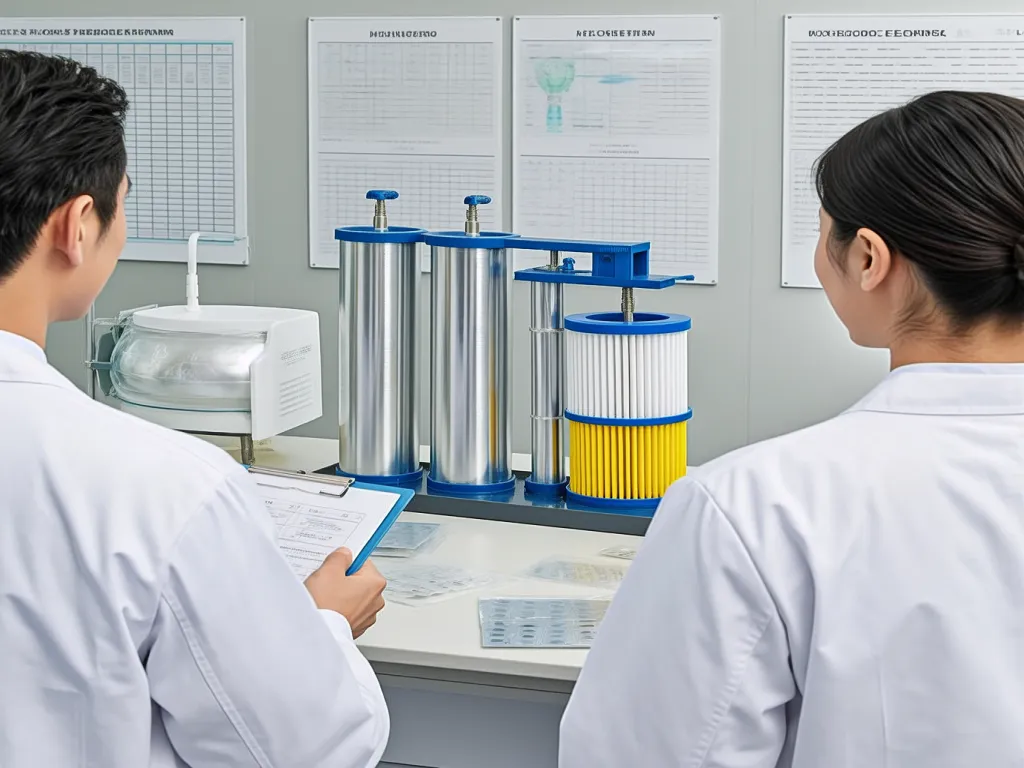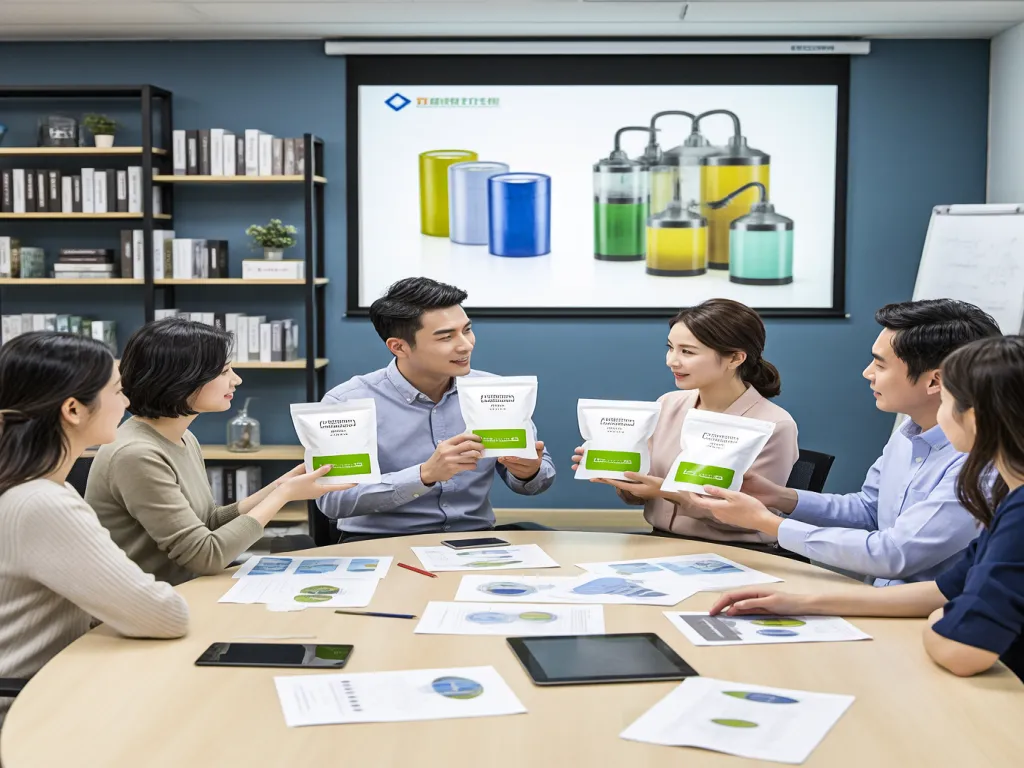Master Water Quality: Industrial Filter Bag Guide

When it comes to water treatment, not all industrial filter bags are created equal. Whether you’re dealing with hard water, soft water, or oil-laden wastewater, selecting the right industrial filter bag for water treatment can make or break your system’s efficiency. Imagine a solution tailored precisely to your water’s unique chemistry—saving costs while boosting performance. So, how do you ensure your filter bag matches your water quality needs? Let’s dive in.

Water Quality Classification and Filtration Needs: Analyzing Special Requirements for Industrial Filter Bags in Different Water Types
When it comes to water treatment, understanding the nuances of various water types is crucial for selecting the right industrial filter bag. Whether you’re dealing with hard water, soft water, or oily wastewater, each presents unique challenges that demand specific filtration solutions. Let’s dive into the details of how different water qualities influence the choice of filter bag materials and pore sizes.
Hard Water: The Calcium and Magnesium Challenge
Hard water, rich in calcium and magnesium ions, can wreak havoc on filtration systems. These minerals tend to form scale deposits, clogging filters and reducing their lifespan. For hard water applications, you’ll want an industrial filter bag that can withstand such scaling without compromising filtration efficiency. Polypropylene (PP) or polyester (PE) filter bags are excellent choices due to their chemical resistance and durability. When it comes to pore size, a finer mesh (1-10 microns) is often recommended to capture the tiny mineral particles effectively.
Soft Water: Gentle on Filters, But Not Without Challenges
Soft water, with low mineral content, might seem easier to filter at first glance. However, its lack of ions can make it more aggressive towards certain filter materials, potentially leading to premature wear. For soft water applications, consider filter bags made from materials like nylon or PTFE (Teflon), which offer excellent chemical stability and resistance to degradation. A slightly coarser pore size (10-50 microns) might suffice, as the absence of heavy minerals reduces the risk of clogging.
Oily Wastewater: The Grease and Oil Conundrum
Oily wastewater poses a different set of challenges. Oils and greases can coat filter media, reducing their permeability and effectiveness. To tackle oily wastewater, you’ll need an industrial filter bag with hydrophobic properties. Materials like glass fiber or specially treated polyester can repel oils, preventing them from adhering to the filter surface. Pore sizes in the range of 5-20 microns are typically effective for capturing oil droplets while maintaining adequate flow rates. For more insights on the hydrophobic properties of materials used in industrial filtration, you can refer to this hydrophobic surface research.
Other Water Types: Tailoring Solutions to Specific Needs
Beyond hard, soft, and oily waters, there are numerous other water types, each with its own set of filtration requirements. For instance, wastewater containing heavy metals might require filter bags with high chemical affinity for those metals, while water with high turbidity might necessitate coarser filters to prevent rapid clogging. In all cases, the key is to match the filter bag material and pore size to the specific contaminants present in the water.
So, how do you determine the right combination? Start by conducting a thorough water quality analysis. Identify the types and concentrations of contaminants, as well as the desired level of filtration. Then, consult with filter bag manufacturers or water treatment experts to select a material and pore size that can meet your needs efficiently and cost-effectively. Remember, the right industrial filter bag can make all the difference in ensuring clean, safe water for your operations.
Material Selection: Balancing Durability and Efficiency
Choosing the right material for your industrial filter bag is a delicate balance between durability and filtration efficiency. For hard water, materials like PP and PE shine due to their resistance to scaling. Soft water applications might benefit from nylon or PTFE for their chemical stability. Oily wastewater demands hydrophobic materials like glass fiber or treated polyester. Always consider the specific contaminants in your water when selecting a material.
Pore Size: Finding the Sweet Spot
Pore size is another critical factor in filter bag selection. Too fine, and you risk clogging; too coarse, and you might not capture all contaminants. For hard water, a finer mesh (1-10 microns) is often necessary. Soft water might allow for a coarser pore size (10-50 microns). Oily wastewater typically requires a pore size in the 5-20 micron range to effectively capture oil droplets. The key is to find the sweet spot that balances filtration efficiency with flow rate.

Case Study: Customizing Industrial Filter Bag Selection Based on Water Quality Reports
When it comes to industrial water treatment, the stakes are high. You need a solution that not only effectively filters out contaminants but also keeps operational costs in check. That’s where the magic of customizing industrial filter bag selection based on water quality reports comes into play. Let’s dive into a real-world scenario to see how this works in action. Imagine you’re managing a water treatment plant that deals with a mix of hard water and occasional oil spills. Your current filter bags are struggling to keep up, leading to frequent replacements and escalating costs. It’s time for a change. The first step is to get a comprehensive water quality report. This document is your roadmap, detailing everything from pH levels and turbidity to the presence of specific contaminants like oils, heavy metals, or suspended solids. Armed with this data, you can now make informed decisions about your filter bag selection. For our hypothetical plant, the water quality report reveals high levels of calcium and magnesium (indicating hard water) along with traces of oil. Hard water requires filter bags with a higher resistance to scaling and fouling, while oil contamination demands materials that can repel or capture oils effectively. Enter the customization process. Instead of opting for a one-size-fits-all solution, you work with a supplier who understands the nuances of your water quality. Together, you select a filter bag made from a blend of polyester and a special oil-repellent coating. The polyester provides durability and resistance to hard water minerals, while the coating ensures oils don’t cling to the bag, reducing clogging and extending its lifespan. But it’s not just about the material. The pore size of the filter bag is equally crucial. For hard water, a slightly larger pore size might be acceptable to prevent rapid clogging, but for oil, you need a finer mesh to capture those tiny droplets. The solution? A multi-layered filter bag with varying pore sizes, ensuring efficient filtration of both hard water minerals and oils. The result? A dramatic improvement in filtration efficiency. The new filter bags last longer, reducing the frequency of replacements and, consequently, the operational costs. Plus, the water quality after treatment is significantly better, meeting or even exceeding regulatory standards. This case study highlights the importance of customization. By analyzing the water quality report and selecting an industrial filter bag tailored to your specific needs, you achieve a balance between effective filtration and cost control. It’s a win-win situation that every water treatment plant should consider. So, the next time you’re faced with filter bag selection, don’t just go for the off-the-shelf option. Dig deeper into your water quality data, consult with experts, and customize your solution. You’ll be amazed at the difference it can make in both performance and your bottom line.
The Power of Water Quality Reports
Water quality reports are the cornerstone of customizing your industrial filter bag selection. They provide a detailed snapshot of your water’s composition, allowing you to identify the specific contaminants you’re dealing with. This information is invaluable when it comes to selecting the right filter bag material, pore size, and even design. Without it, you’re essentially shooting in the dark, hoping for the best but often ending up with subpar results.
Material Matters: Choosing the Right Blend
The material of your industrial filter bag is crucial. Different materials offer varying levels of resistance to chemicals, oils, and hard water minerals. For instance, polyester is a popular choice for its durability and chemical resistance, while polypropylene excels in handling oils. By blending materials or applying special coatings, you can create a filter bag that’s tailor-made for your water quality.
Pore Size Precision: Balancing Efficiency and Longevity
Pore size is another critical factor. Too large, and contaminants slip through; too small, and the bag clogs quickly. The key is to find the sweet spot based on your water quality report. For hard water, a slightly larger pore size might suffice, but for oil-laden water, a finer mesh is necessary. Multi-layered filter bags with varying pore sizes offer a versatile solution, ensuring efficient filtration across different contaminants.

Industry Expert Advice: Insights from Water Treatment Veterans on industrial filter bag Selection
When it comes to selecting the right industrial filter bag for water treatment, there’s no substitute for experience. That’s why we’ve invited a panel of water treatment veterans to share their invaluable insights and tips. These experts have spent years navigating the complexities of water filtration, and they’re here to guide you through the selection process with confidence. First off, let’s talk about the importance of understanding your water quality. As our experts point out, not all water is created equal. Hard water, soft water, and water laden with oils or chemicals each demand a different approach. One expert, with over 20 years in the field, emphasizes, ‘The key is to match the filter bag’s material and pore size to the specific contaminants in your water.’ For instance, if you’re dealing with hard water, which is high in minerals like calcium and magnesium, you’ll want a filter bag that can handle the buildup without clogging too quickly. Polyester or polypropylene bags with a finer pore size might be your best bet here. On the other hand, if you’re filtering out oils, a bag with a larger pore size and a hydrophobic material could be more effective. Our experts also stress the importance of considering the flow rate. A filter bag that’s too restrictive can slow down your process, while one that’s too open might not catch all the contaminants. ‘It’s a balancing act,’ says another expert. ‘You need to find the sweet spot where you’re getting maximum filtration without sacrificing efficiency.’ Another crucial factor is the lifespan of the filter bag. No one wants to be constantly replacing bags, so our experts recommend looking for materials that are durable and can withstand the rigors of your specific water treatment process. Some materials, like nylon, are known for their strength and longevity, making them a popular choice in many applications. But don’t just take our word for it. One expert shared a story about a client who was struggling with frequent filter bag replacements. After analyzing the water quality and the client’s specific needs, they recommended a switch to a different material and pore size. The result? A significant reduction in replacement costs and downtime. ‘It’s all about finding the right fit,’ the expert concludes. ‘And that comes from understanding your water, your process, and the options available to you.’
Understanding Water Quality for Filter Bag Selection
Our experts unanimously agree that understanding your water quality is the first step in selecting the right industrial filter bag. Different contaminants require different filtration approaches. For example, if your water contains high levels of suspended solids, you’ll need a filter bag with a smaller pore size to effectively capture these particles. Conversely, if you’re dealing with dissolved solids, a larger pore size might be more appropriate to prevent clogging. One expert notes, ‘Water quality can vary greatly from one location to another, and even within the same facility, different processes can produce different types of contaminants.’ This variability underscores the importance of conducting thorough water quality testing before making a filter bag selection.
The Role of Material and Pore Size in Filtration Efficiency
Material and pore size are two critical factors that determine the efficiency of your industrial filter bag. Our experts explain that the material should be chosen based on its compatibility with the contaminants in your water. For instance, if you’re filtering out oils, a hydrophobic material like PTFE (polytetrafluoroethylene) might be ideal. Pore size, on the other hand, dictates the size of particles that can pass through the filter. A smaller pore size means finer filtration but can also lead to faster clogging if not matched correctly to the water quality. ‘It’s a trade-off,’ says one expert. ‘You want the smallest pore size that can still handle your flow rate without clogging too quickly.’ Finding this balance is key to optimizing your filtration process.
Considering Flow Rate and Longevity in Filter Bag Selection
Flow rate and longevity are two often-overlooked aspects of filter bag selection. Our experts caution against choosing a filter bag solely based on its filtration capabilities without considering how it will affect your overall process. A restrictive filter bag can slow down your flow rate, leading to decreased productivity. Conversely, a bag that’s too open might not provide adequate filtration. Longevity is equally important. ‘No one wants to be changing filter bags every week,’ says one expert. ‘Look for materials that are known for their durability and can withstand the chemical and physical stresses of your water treatment process.’ By considering both flow rate and longevity, you can select a filter bag that meets your filtration needs while minimizing downtime and maintenance costs.
Choosing the right industrial filter bag for water treatment isn’t just about specs—it’s about aligning your filter’s materials and pore sizes with your water’s DNA. From hard water scalers to oil-water separators, customization is key. By leveraging expert advice and real-world case studies, you can strike the perfect balance between cost and clarity. Ready to transform your water treatment setup? Explore our guide, share your insights, and take the first step toward smarter filtration today. The next breakthrough in water quality could be yours.
